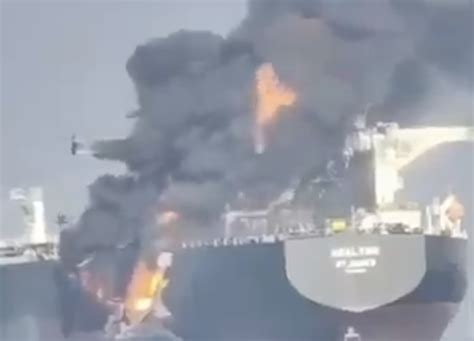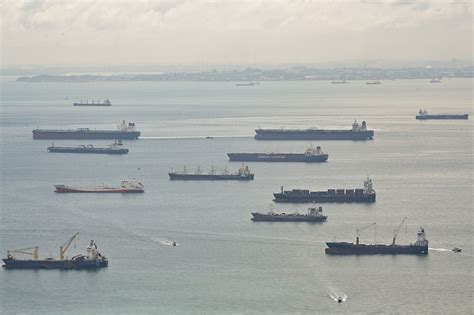
An Israeli airstrike in Syria reportedly targeted and destroyed a significant portion of Iran’s F-14 “Persian Tomcat” fleet, recently redeployed to the Tiyas Military Airbase (T-4). The attack, attributed to Israel by several sources, including the Russian Avia.pro news agency, highlights escalating tensions in the region and marks a potential setback for Iran’s aging but strategically important air force assets. While official confirmation from Iranian or Israeli military sources remains absent, the purported strike has sparked considerable debate and speculation about its implications for regional security.
Alleged Israeli Airstrike Decimates Iranian F-14 Fleet in Syria
An alleged Israeli airstrike has reportedly obliterated a substantial number of Iranian F-14 “Persian Tomcat” fighter jets recently stationed at the Tiyas Military Airbase (T-4) in Syria. The Russian news agency Avia.pro was among the first to report the incident, attributing the attack to the Israeli Air Force. The destroyed aircraft were reportedly part of a contingent recently redeployed to Syria, raising questions about Iran’s strategic intentions and the increasingly volatile security environment in the region. As of now, neither the Israeli Defense Forces (IDF) nor the Iranian military has officially confirmed or denied the strike.
The alleged attack on the T-4 airbase follows a pattern of reported Israeli military actions targeting Iranian assets and proxies in Syria. Israel has repeatedly stated its commitment to preventing Iran from establishing a permanent military presence in Syria, viewing such a development as a direct threat to its national security. The F-14 Tomcats, acquired by Iran before the 1979 revolution, represent a valuable asset for the Iranian Air Force, particularly given the limitations imposed by international sanctions on acquiring modern fighter aircraft. The destruction of a significant portion of this fleet would represent a notable blow to Iran’s air defense capabilities.
The timing of the alleged airstrike is also noteworthy. Tensions in the Middle East have been running high, fueled by ongoing conflicts in Yemen, Syria, and Iraq, as well as concerns over Iran’s nuclear program. The redeployment of the F-14s to Syria could have been interpreted by Israel as a provocative move, warranting a preemptive response. The Avia.pro report suggests that the Israeli Air Force utilized precision-guided munitions to minimize collateral damage and target only the Iranian aircraft.
While details surrounding the attack remain scarce, the potential implications are far-reaching. A weakened Iranian air force could embolden Israel to pursue more aggressive military actions in the region. Conversely, Iran may feel compelled to retaliate, potentially escalating the conflict further. The incident also underscores the complex geopolitical dynamics at play in Syria, where multiple actors, including Russia, Turkey, and the United States, are vying for influence.
The lack of official confirmation from either Israel or Iran adds to the uncertainty surrounding the alleged airstrike. However, the Avia.pro report, coupled with other corroborating accounts, suggests that a significant military event has indeed occurred. As the situation unfolds, it will be crucial to monitor the reactions of key regional and international players to assess the potential for further escalation. The incident serves as a stark reminder of the ever-present risk of conflict in the Middle East and the need for diplomatic efforts to de-escalate tensions.
Historical Context of Iranian F-14 Tomcats
The story of Iran’s F-14 Tomcats is a fascinating one, steeped in Cold War history and geopolitical intrigue. Prior to the 1979 revolution, Iran under the Shah was a close ally of the United States. As part of this alliance, Iran purchased 80 F-14A Tomcats, along with a vast inventory of AIM-54 Phoenix air-to-air missiles, in the mid-1970s. The F-14 was, at the time, one of the most advanced fighter aircraft in the world, capable of engaging multiple targets at long range. The acquisition of the F-14 significantly enhanced Iran’s air defense capabilities and provided a formidable counterweight to the Soviet Union’s air power in the region.
Following the 1979 revolution, relations between Iran and the United States deteriorated sharply. The US imposed sanctions on Iran, cutting off the supply of spare parts and technical support for the F-14 fleet. Despite these challenges, Iran managed to keep a number of its F-14s operational through a combination of ingenuity, cannibalization of parts, and acquisition of components from the black market. During the Iran-Iraq War (1980-1988), the F-14 played a crucial role in defending Iranian airspace against Iraqi attacks. Iranian F-14 pilots claimed numerous kills against Iraqi aircraft, including MiG-21s, MiG-23s, and even some advanced MiG-25 Foxbats.
The F-14 Tomcat was officially retired from US Navy service in 2006, but Iran continued to operate its remaining F-14s, making it the only country in the world still flying the iconic fighter. In recent years, Iran has made efforts to upgrade its F-14 fleet with domestically produced components and weapons. However, the age of the aircraft and the ongoing sanctions have presented significant challenges to maintaining their operational readiness. The potential loss of a significant portion of the F-14 fleet in the alleged Israeli airstrike would represent a major setback for Iran’s air force and could further strain its ability to defend its airspace.
Israel’s Strategic Calculus and Regional Security Implications
Israel’s alleged airstrike on the Iranian F-14s in Syria reflects its long-standing policy of preventing Iran from establishing a permanent military presence in the country. Israel views Iran as its primary strategic adversary and has repeatedly warned against what it perceives as Iran’s destabilizing activities in the region. These activities include support for Hezbollah in Lebanon, Hamas in Gaza, and various Shia militias in Iraq and Syria.
Israel’s concerns about Iran’s presence in Syria stem from several factors. First, Israel fears that Iran could use Syria as a launching pad for attacks against Israeli territory. Second, Israel is concerned that Iran could transfer advanced weapons, such as missiles and drones, to Hezbollah, which could then be used to target Israeli cities. Third, Israel worries that Iran could use Syria to establish a land bridge connecting Iran to Lebanon, giving it greater access to the Mediterranean Sea.
To counter these perceived threats, Israel has conducted hundreds of airstrikes in Syria over the past several years, targeting Iranian assets and weapons convoys. Israel rarely acknowledges these strikes publicly, but it has made it clear that it will take whatever steps are necessary to protect its national security. The alleged airstrike on the Iranian F-14s is consistent with this policy. By destroying a significant portion of Iran’s air force assets in Syria, Israel aims to degrade Iran’s ability to project power in the region and deter it from further entrenching itself in Syria.
The incident also has broader regional security implications. It could escalate tensions between Israel and Iran, potentially leading to further military clashes. It could also complicate the already complex situation in Syria, where multiple actors are vying for influence. The alleged airstrike could also embolden other countries in the region, such as Saudi Arabia, to take a more assertive stance against Iran.
Geopolitical Ramifications and International Response
The alleged Israeli airstrike on the Iranian F-14 fleet in Syria has significant geopolitical ramifications, potentially reshaping the balance of power in the region and prompting a range of international responses. The incident occurs within a complex web of existing conflicts and tensions, involving numerous state and non-state actors, each with their own strategic interests and objectives.
One of the key geopolitical implications is the potential for escalation between Israel and Iran. The two countries have been engaged in a shadow war for years, with Israel conducting airstrikes against Iranian targets in Syria and Iran supporting proxy groups that have attacked Israeli interests. The destruction of a significant portion of Iran’s F-14 fleet could be seen as a major provocation by Iran, potentially leading to retaliatory actions. Iran could respond directly, by launching missile attacks against Israel, or indirectly, by increasing its support for proxy groups that could then target Israeli assets.
The incident could also have implications for the Syrian civil war. The conflict has already drawn in numerous external actors, including Russia, Turkey, and the United States. The alleged Israeli airstrike could further complicate the situation, potentially leading to increased tensions between these actors. Russia, which is a close ally of Syria, has condemned previous Israeli airstrikes in the country and could take a stronger stance in response to the alleged attack on the F-14 fleet. The United States, which is a close ally of Israel, is likely to support Israel’s right to defend itself against Iranian aggression, but it may also be concerned about the potential for escalation.
The international response to the alleged airstrike is likely to be divided. Israel’s allies, such as the United States, are likely to express support for its right to defend itself against Iranian aggression. Other countries, particularly those that are critical of Israel’s policies, may condemn the airstrike as a violation of international law. The United Nations Security Council could be called upon to address the situation, but it is unlikely to reach a consensus, given the deep divisions among its members.
The incident also highlights the limitations of international diplomacy in resolving the conflict between Israel and Iran. Despite numerous attempts to mediate a peaceful resolution, the two countries remain deeply distrustful of each other and continue to engage in provocative actions. The alleged airstrike on the Iranian F-14 fleet underscores the need for a renewed effort to de-escalate tensions and find a way to manage the conflict between Israel and Iran.
Analysis of Potential Israeli Objectives and Tactics
The alleged Israeli airstrike against the Iranian F-14 fleet in Syria likely served multiple strategic objectives, reflecting Israel’s broader security concerns and its approach to managing the threat posed by Iran and its proxies. Understanding these objectives and the potential tactics employed provides valuable insight into Israel’s strategic calculus and its willingness to take preemptive action.
One primary objective was undoubtedly to degrade Iran’s air defense capabilities in Syria. The F-14 Tomcats, despite their age, represent a valuable asset for Iran’s air force, capable of intercepting enemy aircraft and providing air cover for ground forces. By destroying a significant portion of this fleet, Israel would diminish Iran’s ability to project power in Syria and complicate its efforts to support its allies, including the Assad regime.
Another objective may have been to send a clear message to Iran about the consequences of its continued military buildup in Syria. Israel has repeatedly warned Iran against establishing a permanent military presence in the country, and the airstrike could be seen as a demonstration of Israel’s resolve to prevent this from happening. By taking decisive action, Israel aims to deter Iran from further entrenching itself in Syria and to persuade it to reconsider its regional ambitions.
The timing of the alleged airstrike is also significant. The fact that the attack occurred shortly after the redeployment of the F-14s to Syria suggests that Israel may have been acting on intelligence indicating an imminent threat. It is possible that Israel believed that the F-14s were being positioned to support offensive operations against Israeli targets or to provide air cover for Iranian weapons shipments to Hezbollah in Lebanon.
In terms of tactics, it is likely that the Israeli Air Force utilized precision-guided munitions to minimize collateral damage and target only the Iranian aircraft. This approach is consistent with Israel’s past military operations in Syria, which have sought to avoid civilian casualties and damage to infrastructure. It is also possible that Israel employed electronic warfare techniques to disrupt Syrian air defenses and ensure the success of the airstrike.
The alleged airstrike also highlights Israel’s reliance on intelligence gathering and analysis. To effectively target the Iranian F-14s, Israel would have needed accurate information about their location, readiness status, and potential mission objectives. This suggests that Israel has a robust intelligence network in Syria and is capable of monitoring Iranian activities closely.
Alternative Explanations and Counterarguments
While the prevailing narrative suggests that an Israeli airstrike decimated Iran’s F-14 fleet in Syria, alternative explanations and counterarguments must be considered to provide a more comprehensive understanding of the situation. It is crucial to approach such reports with a degree of skepticism, particularly in the absence of official confirmation from either Israel or Iran.
One alternative explanation is that the damage to the F-14s was caused by an accident or malfunction, rather than a deliberate attack. Aircraft are complex machines, and accidents can happen, even in peacetime. It is possible that one or more of the F-14s experienced a mechanical failure or caught fire, leading to their destruction. While this scenario may seem less likely, it cannot be entirely ruled out.
Another possibility is that the reports of the airstrike are exaggerated or based on misinformation. In the age of social media and online news, it is easy for rumors and false information to spread quickly. It is possible that the Avia.pro report and other corroborating accounts are based on unreliable sources or have been deliberately manipulated to create a false narrative.
Furthermore, it is important to consider the potential motivations of the various actors involved. Avia.pro, for example, is a Russian news agency, and it is possible that it has an agenda in reporting the alleged airstrike in a certain way. Russia is a close ally of Syria and Iran, and it may be seeking to portray Israel in a negative light or to deflect attention from its own military actions in the region.
It is also worth noting that Iran has a history of downplaying or denying military setbacks. Even if the F-14s were indeed damaged or destroyed in an airstrike, Iran may be reluctant to admit it publicly, as this would be seen as a sign of weakness. Instead, Iran may choose to attribute the damage to an accident or to remain silent altogether.
Finally, it is important to acknowledge the inherent limitations of open-source intelligence. While news reports and online accounts can provide valuable information, they are often incomplete or inaccurate. It is difficult to verify the claims made in these reports without access to classified intelligence and on-the-ground verification.
Iran’s Potential Responses and Escalation Scenarios
The reported destruction of a significant portion of Iran’s F-14 fleet in Syria presents Tehran with a complex set of strategic choices, ranging from measured restraint to aggressive retaliation. Iran’s response will likely be influenced by a variety of factors, including its assessment of the damage inflicted, its strategic objectives in Syria, and its broader relationship with Israel and the United States.
One possible scenario is that Iran will choose to downplay the incident and refrain from taking any immediate retaliatory action. This approach would be consistent with Iran’s past behavior in similar situations, where it has sought to avoid direct confrontation with Israel and the United States. Iran may calculate that a military response would be too costly and could escalate the conflict to a point where it loses control. Instead, Iran may focus on strengthening its defenses in Syria and improving its intelligence gathering capabilities.
Another scenario is that Iran will respond indirectly, by increasing its support for proxy groups that could then target Israeli interests. This approach would allow Iran to retaliate without directly engaging Israeli forces, thereby minimizing the risk of escalation. Iran could, for example, provide Hezbollah in Lebanon with more advanced weapons or encourage Palestinian militants in Gaza to launch attacks against Israel.
A third possibility is that Iran will launch a direct military attack against Israel. This scenario is less likely, but it cannot be entirely ruled out. Iran may feel compelled to retaliate if it believes that the airstrike has caused significant damage to its military capabilities or if it perceives that Israel is becoming too aggressive in its actions. A direct attack could take a variety of forms, including missile strikes, drone attacks, or cyberattacks.
Regardless of its initial response, the incident could lead to a broader escalation of the conflict between Israel and Iran. Even if Iran chooses to respond indirectly, Israel may retaliate against Iranian targets in Syria or Lebanon. This could then lead to a cycle of escalation, with each side responding to the other’s actions in a more aggressive manner.
The risk of escalation is particularly high in the current geopolitical environment, where tensions in the Middle East are already running high. The ongoing conflicts in Yemen, Syria, and Iraq, as well as concerns over Iran’s nuclear program, have created a volatile situation in which a single incident could spark a major conflict.
The Role of International Law and Sovereignty
The alleged Israeli airstrike on Iranian F-14s in Syria raises complex questions regarding international law and the principle of sovereignty. These questions are particularly pertinent given the ongoing conflict in Syria and the involvement of numerous external actors.
Under international law, every state has the right to sovereignty, which includes the right to control its own territory and to be free from external interference. However, this right is not absolute. There are certain circumstances in which a state may be justified in using force against another state, such as in self-defense or with the authorization of the United Nations Security Council.
Israel has consistently maintained that its military actions in Syria are justified by the principle of self-defense. Israel argues that Iran is using Syria as a base from which to launch attacks against Israeli territory and to transfer weapons to Hezbollah in Lebanon. Israel claims that it has the right to take preemptive action to defend itself against these threats.
However, this argument is controversial. Many international law experts argue that Israel’s actions in Syria violate the principle of sovereignty and are not justified by the principle of self-defense. They argue that Israel has not presented sufficient evidence to demonstrate that Iran poses an imminent threat to its security and that its actions are disproportionate to the alleged threat.
Furthermore, the Syrian government has not authorized Israel to conduct military operations on its territory. In fact, the Syrian government has repeatedly condemned Israel’s actions as a violation of its sovereignty. This raises further questions about the legality of Israel’s actions under international law.
The United Nations Security Council has not taken a clear position on the issue. Some members of the Security Council, such as the United States, have expressed support for Israel’s right to defend itself. Other members, such as Russia, have condemned Israel’s actions as a violation of international law.
The lack of a clear international consensus on the legality of Israel’s actions in Syria has created a situation in which there is little accountability for violations of international law. This has emboldened Israel to continue its military operations in Syria, despite the objections of the Syrian government and many international law experts.
The incident underscores the challenges of applying international law in situations of armed conflict and the need for a stronger international framework to regulate the use of force.
FAQ Section
1. What exactly happened with the Iranian F-14s in Syria, according to reports? Answer: Reports, primarily from the Russian news agency Avia.pro, suggest that an Israeli airstrike targeted and destroyed a significant portion of Iran’s F-14 “Persian Tomcat” fighter jets that had recently been redeployed to the Tiyas Military Airbase (T-4) in Syria. The aircraft were allegedly struck using precision-guided munitions.
2. Has the Israeli government confirmed or denied its involvement in the airstrike? Answer: As of the current reporting, neither the Israeli Defense Forces (IDF) nor the Iranian military has officially confirmed or denied the strike. This lack of official confirmation adds to the uncertainty surrounding the alleged incident.
3. Why were Iranian F-14s deployed to Syria in the first place? Answer: The reasons for the redeployment are not explicitly stated in the source article. However, it is speculated that it could be part of Iran’s effort to bolster its military presence in Syria, provide air support for its allies, or potentially signal a stronger commitment to defending its interests in the region. This deployment could also be seen as a provocative move by Israel.
4. What is the historical significance of Iran’s F-14 Tomcats? Answer: Iran acquired 80 F-14A Tomcats from the United States before the 1979 revolution. Following the revolution, the US imposed sanctions, cutting off spare parts. Despite this, Iran managed to keep some F-14s operational, using them during the Iran-Iraq War. With the US Navy retiring its F-14s in 2006, Iran became the sole operator of this iconic fighter jet.
5. What could be the potential consequences of this alleged airstrike on regional security? Answer: The alleged airstrike could escalate tensions between Israel and Iran, potentially leading to further military clashes. It could also complicate the situation in Syria, where multiple actors are vying for influence. The incident could also embolden other countries in the region to take a more assertive stance against Iran. A weakened Iranian air force might also encourage Israel to undertake more aggressive military actions.









